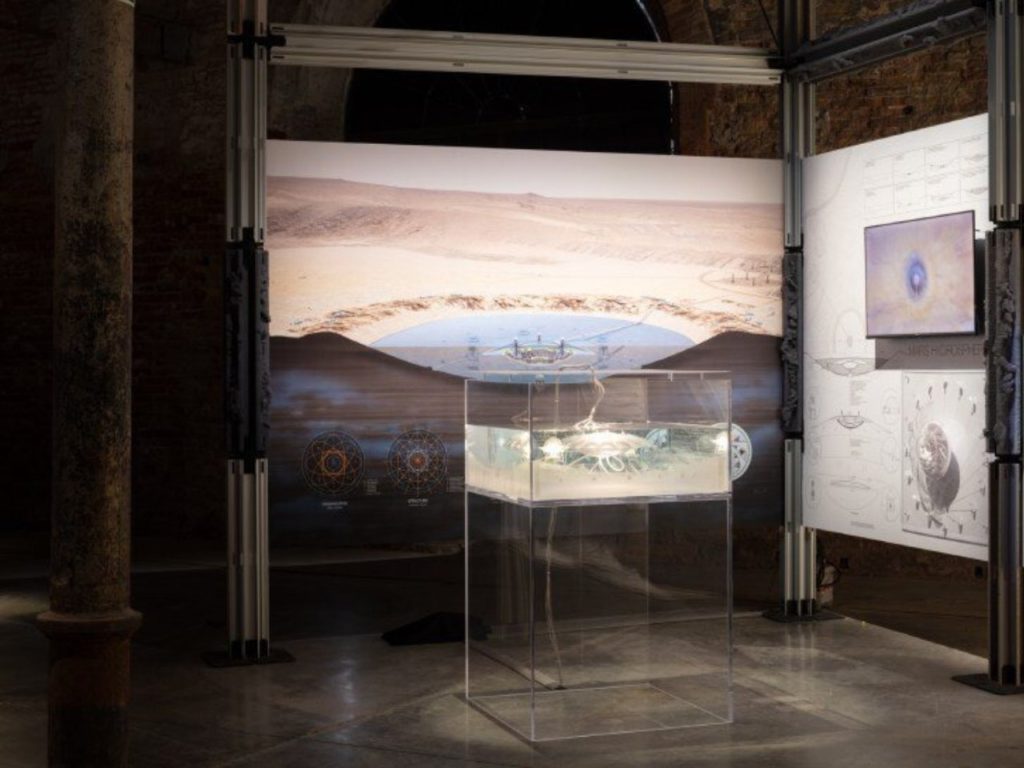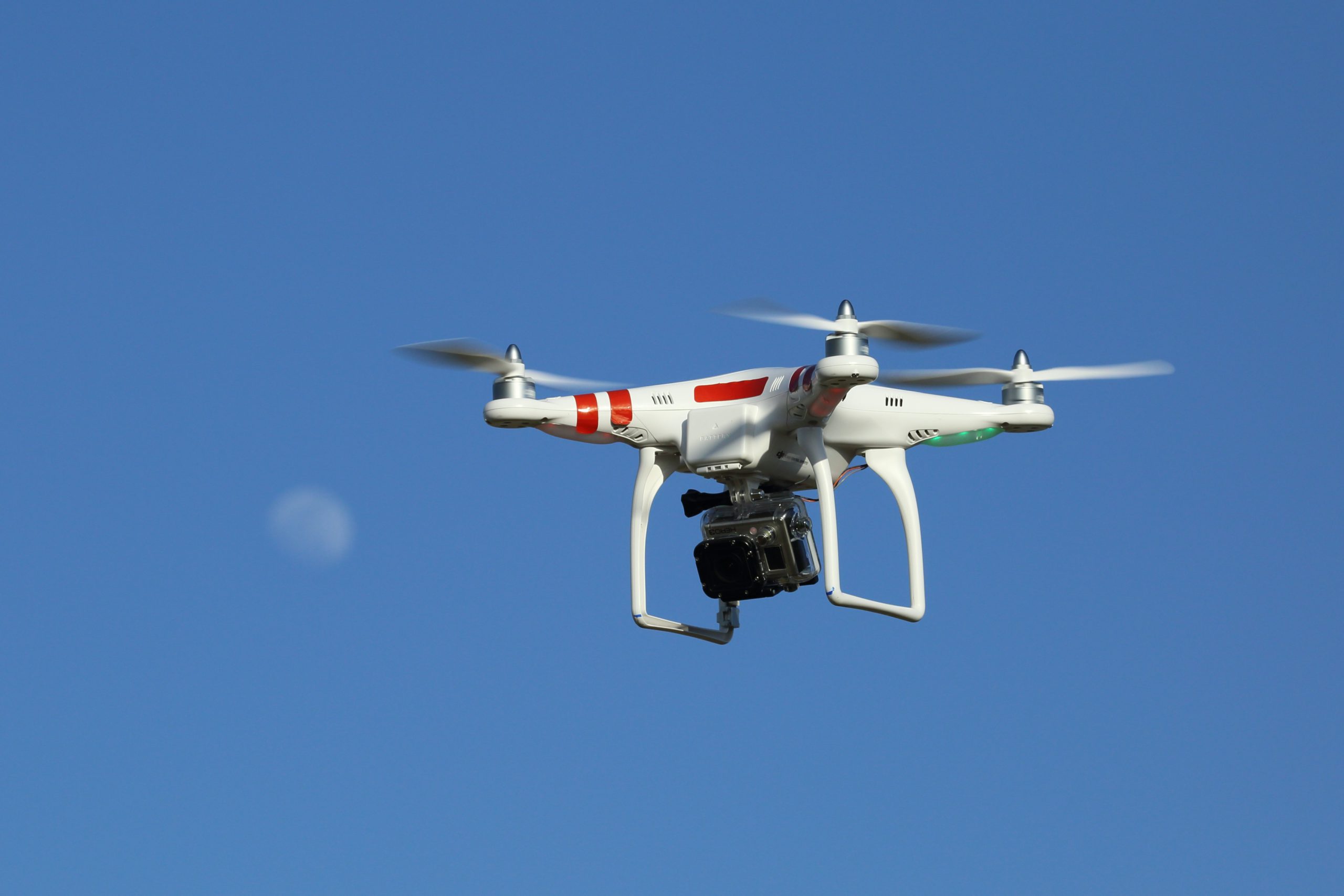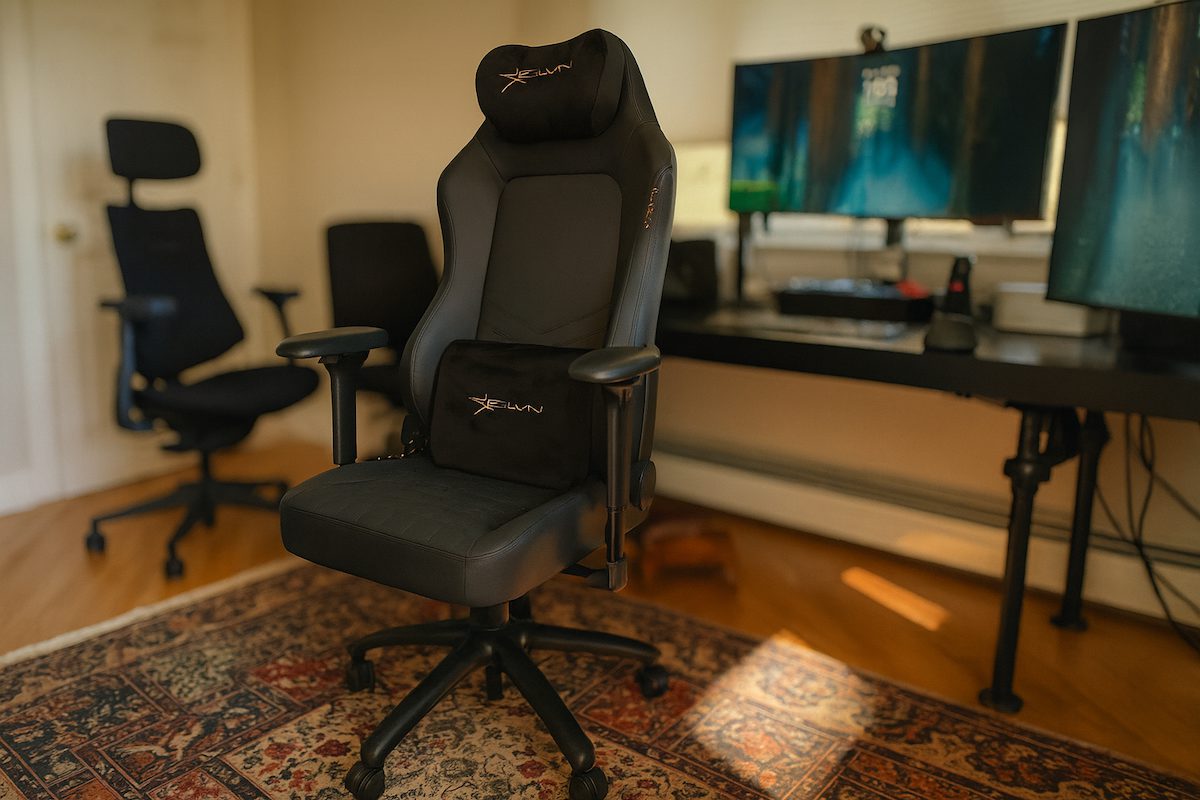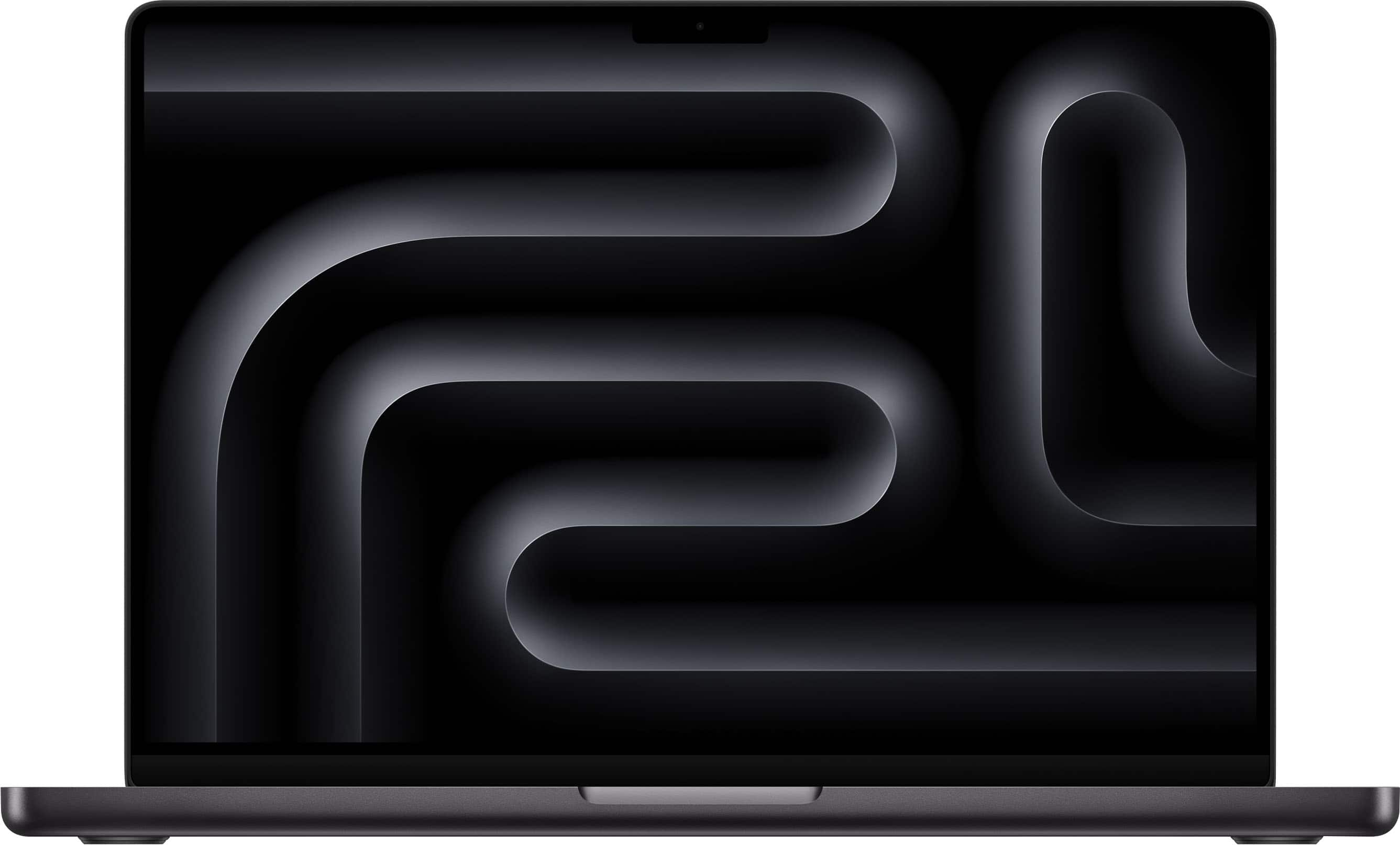New York-based Clouds Architecture Office claims its Mars Hydrosphere proposal addresses the habitation challenges of Martian colonization. Principal Ostap Rudakevych reportedly envisions this underwater city concept using water as shelter and a radiation shield. The design aims to house 10,000 people beneath a pressurized saline reservoir inside Lowell Crater. The established firm, known for winning NASA’s Mars habitat competition, now proposes trading surface survival for submerged safety.
The Display Case

The Venice Architecture Biennale exhibition transforms Mars’s Hydrosphere into a museum artifact. Visitors encounter a transparent display case containing technical diagrams, scale models, and conceptual imagery that feels more like an art installation than an architectural proposal. The presentation mirrors how we currently view Mars colonization—as something to observe rather than inhabit.
The museum setting emphasizes the project’s speculative nature. Physical models show dome structures floating in simulated water while wall-mounted documentation explains technical specifications. This approach distances viewers from the human reality of living underwater on another planet.
The Launch Pad Vision

Multiple dome-shaped habitation modules connect via walkways across the barren Martian landscape in Clouds AO’s surface renderings. These structures feature sleek designs with integrated landing platforms that suggest a gradual colonization process. The aesthetic borrows heavily from sci-fi films but ignores practical questions about construction logistics.
The surface installations supposedly facilitate access to the underwater city below. According to project documentation, transport rockets become repurposed as vertical circulation elements connecting the surface to the seafloor. This dual-level approach adds complexity without clear operational benefits compared to single-environment designs from competing firms, raising questions about how such advanced propulsion concepts, like those behind nuclear-powered spaceflight, might better serve ambitious goals such as rapid Mars transit or other deep-space missions.
Inside The Bubble

The underwater habitat interior shows astronauts floating in a spherical environment with curved white walls. Minimal furnishings and clinical design create a sterile atmosphere that prioritizes function over comfort. The space feels more like a research station than a home for 10,000 people.
Zero-gravity simulation environments already exist on Earth for astronaut training. The Mars Hydrosphere interior doesn’t advance beyond current technology or address the psychological challenges of long-term underwater living. Clean aesthetics can’t solve the fundamental isolation of subsurface existence, though some speculative theories argue that ancient Martian civilizations, complete with megalithic structures and intelligent lifeforms, may have once tackled similar extremes.
The Garden Colony

Architectural renderings reveal covered outdoor spaces with organic curves integrated into landscaped environments. People walk through pavilion-like structures surrounded by vegetation that Clouds AO suggests could thrive in Martian conditions. The project materials simultaneously promote underwater safety and surface accessibility without explaining how both environments work together, considering that Mars’ atmosphere contains 0.146% oxygen compared to Earth’s 21%.
The Technical Deep Dive

Cross-sectional diagrams detail an underground facility built into desert terrain with engineering schematics showing circular mechanical components. The technical documentation suggests serious engineering considerations but reveals the project’s massive infrastructure requirements. Construction would require excavating Lowell Crater, installing pressure systems, and maintaining saline water reservoirs in an environment where liquid water doesn’t naturally exist.
A biomimetic device with jellyfish-like appendages sits in a display case, suggesting biological inspiration for underwater technology. Current aquaculture projects like Italy’s Nemo’s Garden provide Earth-based research for underwater agriculture that Clouds AO references as precedent. Mars’ Hydrosphere would need similar biological systems scaled up dramatically for a city-sized population, though no timeline or funding mechanism has been announced.





























